confederate

 When you think about the Civil War, you think of battles being fought back east…right? For the most part, it was. When the war began, there were 34 states, but by the end, there were 36 states. Of course, some of the Southern states, eleven to be exact, wanted to secede and form their own country. That was partly what the war was about. The Southern states wanted to keep slavery, and the Northern states did not, and because they could not agree, eleven states chose to secede, and the rest fought to keep our nation together.
When you think about the Civil War, you think of battles being fought back east…right? For the most part, it was. When the war began, there were 34 states, but by the end, there were 36 states. Of course, some of the Southern states, eleven to be exact, wanted to secede and form their own country. That was partly what the war was about. The Southern states wanted to keep slavery, and the Northern states did not, and because they could not agree, eleven states chose to secede, and the rest fought to keep our nation together.
Some of the battles were fought, however on the far western front. The first of those battles, was on February 21, 1862. In the Battle of Valverde, Confederate troops under General Henry Hopkins Sibley attacked Union troops commanded by Colonel Edward R S Canby near Fort Craig in the New Mexico Territory. This first major engagement of the Civil War in the far West, produced heavy casualties but ended with no decisive result. Of course, the battle was part of the broader movement by the Confederates to capture New Mexico and other parts of the West. The point was to secure territory that the Rebels thought was rightfully theirs, because it was part of the southern territories of the United States. This area had been denied them by political compromises made before the Civil War, which they felt was wrong. 
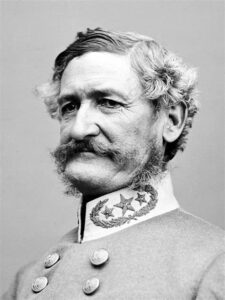
By this time, the Confederacy was quickly going broke, and they wanted to use Western mines to fill its treasury. The Rebel troops moved from San Antonio, into southern New Mexico, which at that time included Arizona, and captured the towns of Mesilla and Tucson. Sibley, with 3,000 troops, now moved north against the Federal stronghold at Fort Craig on the Rio Grande. Canby was determined to make sure the Confederates didn’t lay siege to Fort Craig. Canby knew that the Rebels were running low on supplies, and they wouldn’t last much longer. He knew that Sibley really did not have sufficiently heavy artillery to attack the fort, so when Sibley arrived near Fort Craig on February 15, he ordered his men to swing east of the fort, cross the Rio Grande, and capture the Valverde fords of the Rio Grande. He hoped to cut off Canby’s communication and force the Yankees out into the open, thereby giving the Rebels the upper hand.
For Sibley’s Rebels, things at the fords didn’t initially go as planned. Five miles north of Fort Craig, a Union detachment attacked part of the Confederate force. The Yankees pinned the Texan Rebels in a ravine and were on the verge of routing them when more of Sibley’s men arrived and turned the tide. Sibley’s second in command, Colonel Tom Green, who was filling in for Sibley, who was ill, made a bold counterattack against the Union left flank. The Yankees retreated, heading back to Fort Craig. Sibley’s men didn’t take Fort Craig either.
During the Battle of Valverde, out of 3,100 men, the Union suffered 68 killed, 160 wounded, and 35 missing. 
 The Confederates suffered 31 killed, 154 wounded, and 1 missing out of 2,600 troops. The battle was indeed bloody, but none of their objectives were accomplished, so it was virtually an indecisive battle. From Fort Craig, Sibley’s men continued up the Rio Grande winning battle after battle. Nevertheless, after capturing Albuquerque and Santa Fe, they were stopped at the Battle of Glorieta Pass on March 28, 1862.
The Confederates suffered 31 killed, 154 wounded, and 1 missing out of 2,600 troops. The battle was indeed bloody, but none of their objectives were accomplished, so it was virtually an indecisive battle. From Fort Craig, Sibley’s men continued up the Rio Grande winning battle after battle. Nevertheless, after capturing Albuquerque and Santa Fe, they were stopped at the Battle of Glorieta Pass on March 28, 1862.

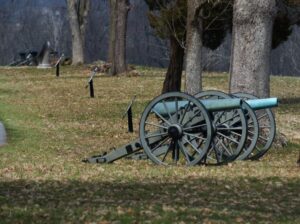 War is a really horrific thing for soldiers to go through, and closure comes in different forms for different soldiers. Returning to the battlefield is a way to find closure for many veterans. It is also a way for solders to keep the friendships they made at a time when their life depended on their fellow soldiers. Countless numbers of men have returned to places like the beaches of Normandy, France to see that place again, where so many lost their lives. Some soldiers didn’t leave the place they fought in their war. Vietnam was that way to a degree.
War is a really horrific thing for soldiers to go through, and closure comes in different forms for different soldiers. Returning to the battlefield is a way to find closure for many veterans. It is also a way for solders to keep the friendships they made at a time when their life depended on their fellow soldiers. Countless numbers of men have returned to places like the beaches of Normandy, France to see that place again, where so many lost their lives. Some soldiers didn’t leave the place they fought in their war. Vietnam was that way to a degree.
The Civil War was unique in that when the veterans decided to have their reunion, they wanted to, of course renew old friendships with those they shared a common bond, but they also wanted to make their reunion a way to bring the north and south back together again. The Gettysburg, Pennsylvania reunion was the largest of these events, and so made headline news around the world. The event took place in 1913 at Gettysburg, Pennsylvania. The Civil War was unique in that all participants were citizens of the United States. Brother fought against brother, and family members against family members. The reunion was a chance to repair those horribly broken relationships for all the men who were still alive at the reunion, which was held on the 50th anniversary of the battle. General H.S. Huidekoper, a Gettysburg Veteran of the 150th PA., was the man behind the idea of making it a gathering of both Northern and Southern Veterans on the 50th Anniversary of the battle. With the state of Pennsylvania, acting as host, $400,000 was set aside to finance the event. The Federal Government added $195,000 and the volunteer services of 1,500 officers and enlisted men. The event was five years in the planning, with Veteran groups throughout the nation helping to make it happen.
The Veterans who were still alive were aging, and because of the reunion, they were able not only to renew the friendships they had, but new friendships were born, and old wounds healed as well. The youngest Veteran, Colonel John C. Clem (known as the Shiloh drummer boy), was 62 years old. The oldest Veteran was 112 years of age. A total of 55,000 veterans attended the event, representing the half million living Confederate and Union Veterans. Of the 55,000 men, 22,103 came from Pennsylvania, and of those, 303 were Confederate. The smallest delegation came from New Mexico…one, a Union Veteran.
The event…one I wish I could have seen, saw over 5,000 tents, covering 280 acres in the middle of the battlefield, where so many had lost their lives. It was almost as if they were there too…giving their approval. Distinguished guests had come to give speeches and presentations. General Daniel Sickles, representing the III Corps at Gettysburg where he lost his leg, was the only corps commander present. On behalf of the battle leaders were the daughter of General Meade and the grandchildren of Generals Longstreet, A.P. Hill and Pickett.
The reunion lasted a full week. The men ate well and swapped stories, cried and laughed. In all 688,000 meals were served by two thousand cooks and helpers. Amazingly and considering the age and health of the Veterans, along with the hot, sultry weather, there were only nine Veterans who did not survive the week, a number well below the normal mortality rate for that day. Perhaps it was the exhilaration of the joining of old friends, reliving days of their youth, hearing the infamous Rebel Yell resound across the battlefield, or reenacting Pickett’s charge to have the Stars and Bars meet the trefoil of Hancock’s II Corps once more that had lengthened their lives.
In the most stunning moment of the event…on the fourth of July at high noon, a great silence fell over the battlefield, as the church bells began to toll. Buglers of the blue and gray prepared to play the mournful tune of Taps one last time. The guns of Gettysburg shook the ground, signaling the end of the weeklong event. When I visited Gettysburg many years later, I was surprised by exactly how that place felt. You could feel the atmosphere there all those years later. It is hallowed ground. You feel like you should whisper…or better yet just be silent. I have never felt that way before, or since.
And though many eloquent speeches were given at Gettysburg that week, none expressed what these Veterans took away from this experience better than a scene witnessed at the train station: “Nearly all of the men had said their good-byes and headed for home. On the station platform a former Union soldier from Oregon and a Louisiana Confederate were taking leave of each other. They shook hands and embraced, but neither seemed 
 able to find the words to express his feelings. Then an idea seemed to strike both men at once. In a simple act, which seemed to say everything they felt the pair took off their uniforms and exchanged them. The Yankee went home in Rebel gray, the Confederate in Union blue.” The above quote is an excerpt from “Gettysburg: The 50th Anniversary Encampment,” by Abbott M. Gibney, Civil War Times Illustrated, October 1970.
able to find the words to express his feelings. Then an idea seemed to strike both men at once. In a simple act, which seemed to say everything they felt the pair took off their uniforms and exchanged them. The Yankee went home in Rebel gray, the Confederate in Union blue.” The above quote is an excerpt from “Gettysburg: The 50th Anniversary Encampment,” by Abbott M. Gibney, Civil War Times Illustrated, October 1970.
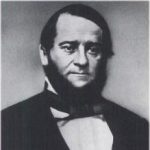 Following his marriage to a wealthy widow named Virginia Mason, Wilmer McLean moved onto her small plantation in Manassas Junction, Virginia. The property was beautiful, and a small stream called Bull Run ran through it. Fourteen slaves tended the fields of Yorkshire, named for the home county of English native Richard Blackburn who had established the plantation in the early 1700s. Little did Wilmer know at the time of his marriage, that in a mere eight years, their plantation would be the center of the beginning of the American Civil War.
Following his marriage to a wealthy widow named Virginia Mason, Wilmer McLean moved onto her small plantation in Manassas Junction, Virginia. The property was beautiful, and a small stream called Bull Run ran through it. Fourteen slaves tended the fields of Yorkshire, named for the home county of English native Richard Blackburn who had established the plantation in the early 1700s. Little did Wilmer know at the time of his marriage, that in a mere eight years, their plantation would be the center of the beginning of the American Civil War.
When the Civil War broke out in 1861, McLean was too old to serve on the Confederate Army, but that did not prevent his involvement in the war. When I think of the Civil War, I somehow think of two armies coming together out in the middle of nowhere in an open field. Of course, war isn’t that simple. War takes place in towns and villages and city streets too. When the two armies, the Union and the Confederates came to the place of their first battle, it would just happen to be ight in the middle of McLean’s plantation. The battle, the first major engagement between Union and Confederate forces, taking place in July 1861, would be remembered as the First Battle of Bull Run…fought right there at the stream on the McLean plantation.
As Union forces approached on a 30-mile march west from Washington DC, Confederate General P.G.T. Beauregard took over the Yorkshire Plantation farmhouse in Manassas as his headquarters. Soon, McLean took his family to safer ground, and the next day, July 18, 1861, during the Battle of Blackburn’s Ford, a Union shell tore into the fireplace of McLean’s detached kitchen and ruined the dinner being prepared for Beauregard and his staff. Three days later came the Civil War’s first major encounter, the First Battle of Bull Run. The barn quickly became a makeshift military hospital, housing both wounded Confederate soldiers and captured Union fighters. The men all shared the floor of the barn, which had become, in addition to the hospital, a prisoner of war jail, as well.
Yorkshire was ravaged in the battle, and when McLean had safely tucked his family far away from the battle, he returned alone to survey the damaged plantation. I’m sure it must have been a devastation blow to McLean, but he stayed worked as an unpaid Confederate quartermaster through February 1862, before reuniting with his wife and five children in the spring.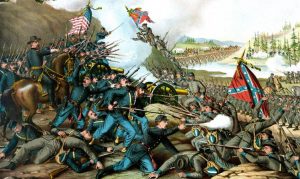
Back at home in Yorkshire in August 1862, McLean could not believe what he was seeing when the Second Battle of Bull Run began on the Yorkshire Plantation. It seemed that he just could not outrun the war and keep his plantation too. When the Union and Confederacy clashed once again in Manassas at the Second Battle of Bull Run in August 1862, McLean began to plan on a way to better protect his family from the war. In the fall of 1863, McLean moved his family 120 miles southwest to the quiet little town of Appomattox Court House on the other side of the state of Virginia. He purchased a beautiful house, originally built as a tavern in 1848, along the Lynchburg-Richmond State Road and regularly traveled on the nearby Southside Railroad to tend to his business supplying sugar to the Confederate army.
McLean thought he had finally managed to move his family to a place where they could live in peace and quiet, but little did he know that even in Appomattox, he could not outrun the Civil War. Once again, the Civil War came calling at his door again. On April 9, 1865, Confederate Colonel Charles Marshall rode into Appomattox Court House and asked the first man he spotted, who just happened to be McLean, to help him find a suitable home to hold a meeting between the Union and Confederate commanders. McLean showed him a place, but it was a pretty dilapidated, unfurnished brick house, and Marshall quickly rejected it. Reluctantly, McLean offered his own comfortable, well furnished home…hoping that this would not be a repeat of the beginning of the war, when his home was pretty close to being destroyed.
That afternoon, in pretty much the same place it had started…the McLean parlor, history was made as Confederate General Robert E. Lee surrendered his forces to Union General Ulysses S. Grant, marking the beginning of the end of the Civil War. McLean’s homes had become a “pair of bookends” to the long four year war. Like the first meeting between McLean and the army, this one would also not end well. As General Lee departed on his horse Traveler to break the news to his troops, the Union officers launched their final raid of the war by ransacking McLean’s parlor for souvenirs of the historic meeting. According to Civil War historian, Shelby 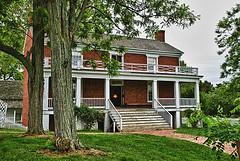 Foote, “Something close to pandemonium set in. As McLean protested, the Union entourage walked out with the tables and chairs used by Lee and Grant, a stone inkstand, brass candlesticks and even the favorite rag doll of his 7-year-old daughter, Lula. They tore apart McLean’s cane-bottomed chairs and cut upholstery strips from his sofas as mementoes. As compensation, the soldiers shoved money into the hands of the unwilling seller and threw it onto the floor when he refused to accept it.” War is an ugly thing, and men don’t always act in a gentlemanly way to the losers, or the winners. Nevertheless, the losers are often treated far worse than the winners, as has been seen in many a war.
Foote, “Something close to pandemonium set in. As McLean protested, the Union entourage walked out with the tables and chairs used by Lee and Grant, a stone inkstand, brass candlesticks and even the favorite rag doll of his 7-year-old daughter, Lula. They tore apart McLean’s cane-bottomed chairs and cut upholstery strips from his sofas as mementoes. As compensation, the soldiers shoved money into the hands of the unwilling seller and threw it onto the floor when he refused to accept it.” War is an ugly thing, and men don’t always act in a gentlemanly way to the losers, or the winners. Nevertheless, the losers are often treated far worse than the winners, as has been seen in many a war.
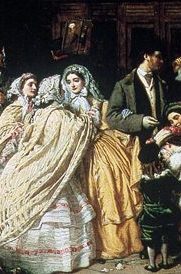 These days, with all the television shows about secret agents, undercover cops, and spies, most of us wouldn’t think twice about one of those positions being held by a woman. During the American Civil War, however, which basically coincided with the Victorian era, one of the most morally repressive eras in history for women, things were different. Everything from a woman’s dress to her education were tightly constricted by moral attitudes that governed her every action. Basically, women were to concentrate their “war efforts” on the task of supporting their husband, brothers, or fathers, in whatever their beliefs were toward the matter. However, as the war dragged on and more men were called into active duty, the farms, factories, stores, and schools were left without workers, so the women stepped up to stand in the gap, as it were. This was most surprising because, back then, women were considered too frail, and their minds too simple for things like politics and war. They were designed for keeping the home and taking care of the babies. Nevertheless, when the men were called into active duty, most of them would have lost their farms, homes, and businesses had it not been for the strength and intelligence of the of the “frail and simple” women. Many women refused to limit their assistance to their country to what could be accomplished close to home. Some of them became nurses, worked to raise supplies for their troops, or even worked in armories, but there was a number of these women decided to support their country in a more dangerous…and scandalous way…they became spies.Back then, espionage was considered a very dishonorable pursuit for a man during the Civil War era, but for a woman…it was tantamount to prostitution. Nevertheless, with the war raging, women of both the North and South flaunted the Victorian morality of the time to provide their country the intelligence it needed to make tactical and practical decisions.
These days, with all the television shows about secret agents, undercover cops, and spies, most of us wouldn’t think twice about one of those positions being held by a woman. During the American Civil War, however, which basically coincided with the Victorian era, one of the most morally repressive eras in history for women, things were different. Everything from a woman’s dress to her education were tightly constricted by moral attitudes that governed her every action. Basically, women were to concentrate their “war efforts” on the task of supporting their husband, brothers, or fathers, in whatever their beliefs were toward the matter. However, as the war dragged on and more men were called into active duty, the farms, factories, stores, and schools were left without workers, so the women stepped up to stand in the gap, as it were. This was most surprising because, back then, women were considered too frail, and their minds too simple for things like politics and war. They were designed for keeping the home and taking care of the babies. Nevertheless, when the men were called into active duty, most of them would have lost their farms, homes, and businesses had it not been for the strength and intelligence of the of the “frail and simple” women. Many women refused to limit their assistance to their country to what could be accomplished close to home. Some of them became nurses, worked to raise supplies for their troops, or even worked in armories, but there was a number of these women decided to support their country in a more dangerous…and scandalous way…they became spies.Back then, espionage was considered a very dishonorable pursuit for a man during the Civil War era, but for a woman…it was tantamount to prostitution. Nevertheless, with the war raging, women of both the North and South flaunted the Victorian morality of the time to provide their country the intelligence it needed to make tactical and practical decisions.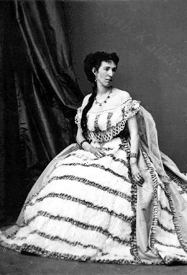
The most famous of these female spies was Belle Boyd…born Marie Isabella Boyd. She began spying for the Confederacy when Union troops invaded her Martinsburg, Virginia home in 1861. One of the Federal soldiers manhandled her mother, and Boyd shot and killed him. She was exonerated in the soldier’s death, and an emboldened Boyd managed to befriend the Union soldiers left to guard her, and used her slave, Eliza, to pass information confided in her by the soldiers along to Confederate officers. Boyd was caught at her first attempt at spying, and threatened with death, but she did not stop her activities. She vowed to find a better way instead. She began eavesdropping on union officers staying at her father’s hotel. She learned enough to inform General Stonewall Jackson about their regiment and activities. Taking no chances, this time, Boyd delivered her intelligence firsthand, moving through Union lines, and reportedly drawing close enough to the action to return with bullet holes in her skirts. The information she provided allowed the Confederate army to advance on Federal troops at Fort Royal. Boyd’s daring acts of espionage soon caught up with her again and when a beau gave her up to Union authorities in 1862, she was arrested and held in the Old Capitol Prison in Washington for a month. Then she released, but found herself in the arrested again soon after. Once again, she managed to be set free, and this time she traveled to England, where amazingly, she married not a Confederate soldier, but a Union officer.
Boyd wasn’t the only spy in the Civil War. Another famous female spy was nicknamed “Crazy Bet,” but her real 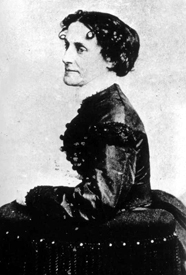 name was Elizabeth Van Lew. Van Lew was born to a wealthy and prominent Richmond family, and was educated by Quakers in Philadelphia. When she returned to Richmond, she had become an abolitionist. She even went so far as to convince her mother to free the family’s slaves. Her espionage activity began soon after the start of the war. Her neighbors were appalled, because she openly supported the Union. She concentrated her efforts on aiding Federal prisoners at the Libby Prison, by taking them food, books, and paper. Later, she smuggled information about Confederate activities from the prisoners to Union officers, including General Ulysses S. Grant. To hide her activities from her Confederate neighbors, she behaved oddly. She dressed in old clothes, talking to herself, and refusing to comb her hair. Believe it or not, people began to think she was insane. They started calling her “Crazy Bet.” Van Lew wasn’t insane, in fact, she was incredibly intelligent. She was hailed by Grant as the provider of some of the most important intelligence gathered during the war.
name was Elizabeth Van Lew. Van Lew was born to a wealthy and prominent Richmond family, and was educated by Quakers in Philadelphia. When she returned to Richmond, she had become an abolitionist. She even went so far as to convince her mother to free the family’s slaves. Her espionage activity began soon after the start of the war. Her neighbors were appalled, because she openly supported the Union. She concentrated her efforts on aiding Federal prisoners at the Libby Prison, by taking them food, books, and paper. Later, she smuggled information about Confederate activities from the prisoners to Union officers, including General Ulysses S. Grant. To hide her activities from her Confederate neighbors, she behaved oddly. She dressed in old clothes, talking to herself, and refusing to comb her hair. Believe it or not, people began to think she was insane. They started calling her “Crazy Bet.” Van Lew wasn’t insane, in fact, she was incredibly intelligent. She was hailed by Grant as the provider of some of the most important intelligence gathered during the war.
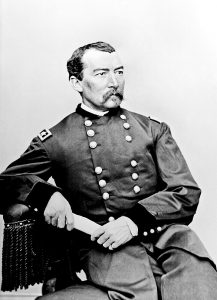
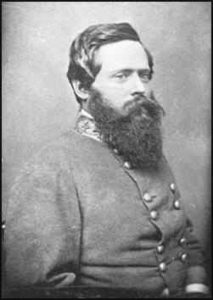 During the Civil War, rail lines were crucial for moving supplies from one place to another. The different sides often tried to waylay the trains, derail the trains, or even destroy the rails. On June 10, 1864, a Confederate cavalry intercepted General Phillip Sheridan’s Union cavalry while they were trying to destroy a rail line near Trevilian Station, Virginia. The ensuing battle lasted two days before the Confederates were finally able to drive off the Union cavalry from the station, with minimal damage to a precious supply line.
During the Civil War, rail lines were crucial for moving supplies from one place to another. The different sides often tried to waylay the trains, derail the trains, or even destroy the rails. On June 10, 1864, a Confederate cavalry intercepted General Phillip Sheridan’s Union cavalry while they were trying to destroy a rail line near Trevilian Station, Virginia. The ensuing battle lasted two days before the Confederates were finally able to drive off the Union cavalry from the station, with minimal damage to a precious supply line.
After the Confederate victory at the Battle of Cold Harbor in June 1864, in which over 15,000 combined casualties fell during the nearly two-week fight, Union General Ulysses S. Grant dispatched his cavalry commander, General Phillip Sheridan to ride towards Charlottesville and cut the Virginia Central Railroad. The line was supplying Robert E. Lee’s Army of Northern Virginia. Lee’s Army was engaged in a life-or-death struggle with Grant’s Army of the Potomac, in the areas of Richmond and Petersburg.
Sheridan turned north to skirt around Richmond and headed toward Charlottesville, which was 60 miles northwest of Richmond. Unfortunately, Sheridan’s move was far from secret, and General Wade Hampton, commander of the Confederate cavalry, set out to intercept the Union cavalry. On the morning of June 11, Union General George Custer’s men attacked Hampton’s supply train near Trevilian Station. Although they scored an initial success, Custer soon found himself almost completely surrounded by the Confederate Cavalry. Custer formed his men into a triangle and made several counterattacks before Sheridan came to his rescue in the late afternoon, taking 500 Southern prisoners in the process. 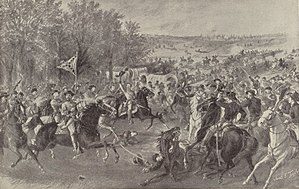
The struggle continued the next day. With his ammunition running low and his cavalry dangerously far from its supply line, Sheridan eventually withdrew his force and returned to the Army of the Potomac. The Union Cavalry tore up about five miles of rail line, but the damage was relatively light for the high number of casualties. Sheridan lost 735 men compared with nearly 1,000 for Hampton. But the Confederates had driven off the Union cavalry and had kept the damage to railroad to a minimum…not that it would make a difference in the outcome of the Civil War.
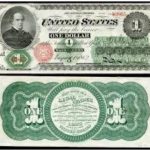 During the Civil War, money was made out of silver and gold. People would not have trusted any other form of money, but having enough silver and gold to make that money wasn’t always easy. The Northern states needed money, and they knew they had to make it, but Congress and others were concerned for the economy. If the government made money without silver or gold to back it, wouldn’t it eventually doom the economy? Most of us would call that counterfeit money, and yet our government is still doing this at times, more than we want to think about. Nevertheless, if you are part of the government, or even just someone who understands how such money can effect the economy, you might very likely be against something like the Legal Tender Act that was passed by the US Congress on this day, February 25, 1862.
During the Civil War, money was made out of silver and gold. People would not have trusted any other form of money, but having enough silver and gold to make that money wasn’t always easy. The Northern states needed money, and they knew they had to make it, but Congress and others were concerned for the economy. If the government made money without silver or gold to back it, wouldn’t it eventually doom the economy? Most of us would call that counterfeit money, and yet our government is still doing this at times, more than we want to think about. Nevertheless, if you are part of the government, or even just someone who understands how such money can effect the economy, you might very likely be against something like the Legal Tender Act that was passed by the US Congress on this day, February 25, 1862.
This was a huge step. Prior to this time, the money was real money. It needed no proof that its value was real,  the people using it could see that for themselves. The United States didn’t have money that was basically an I.O.U. before that time. The problem was that they also had a war going on that cost a lot of money, and with people fighting the war, there were a lot less people to go out and look for gold and mine silver. It was a big problem, but the Civil War was extremely costly, and it had to be financed. The government had to face the fact that the supply of gold and silver was depleted. The Legal Tender Act was not a decision they came to lightly. They discussed every other option, including bonds. Once they settled on paper money, the Union government printed 150 million dollars in paper money…called greenbacks. The Confederate government had been printing money since the beginning of the war, which proved to be folly in the end, but I guess if the south had won, it would have gone the other way. Nevertheless, the bankers and financial experts predicted doom immediately, and many legislators worried that the money might collapse the infrastructure.
the people using it could see that for themselves. The United States didn’t have money that was basically an I.O.U. before that time. The problem was that they also had a war going on that cost a lot of money, and with people fighting the war, there were a lot less people to go out and look for gold and mine silver. It was a big problem, but the Civil War was extremely costly, and it had to be financed. The government had to face the fact that the supply of gold and silver was depleted. The Legal Tender Act was not a decision they came to lightly. They discussed every other option, including bonds. Once they settled on paper money, the Union government printed 150 million dollars in paper money…called greenbacks. The Confederate government had been printing money since the beginning of the war, which proved to be folly in the end, but I guess if the south had won, it would have gone the other way. Nevertheless, the bankers and financial experts predicted doom immediately, and many legislators worried that the money might collapse the infrastructure.
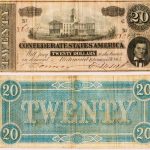
The greenbacks did not sink the economy. In fact, they worked very well. The government was able to pay its bills and, by increasing the money in circulation, the Northern economy actually improved. The greenbacks were legal tender, which meant that creditors had to accept them at face value. Life went on, but there were repercussions from the new money. In 1862, Congress was forced to pass an income tax and steep excise taxes, designed to cool the inflationary pressures created by the greenbacks. In 1863, another legal tender act was passed, and by the war’s end nearly half a billion dollars in greenbacks had been issued. The Legal Tender Act laid the foundation for the creation of a permanent currency in the decades after the Civil War.

